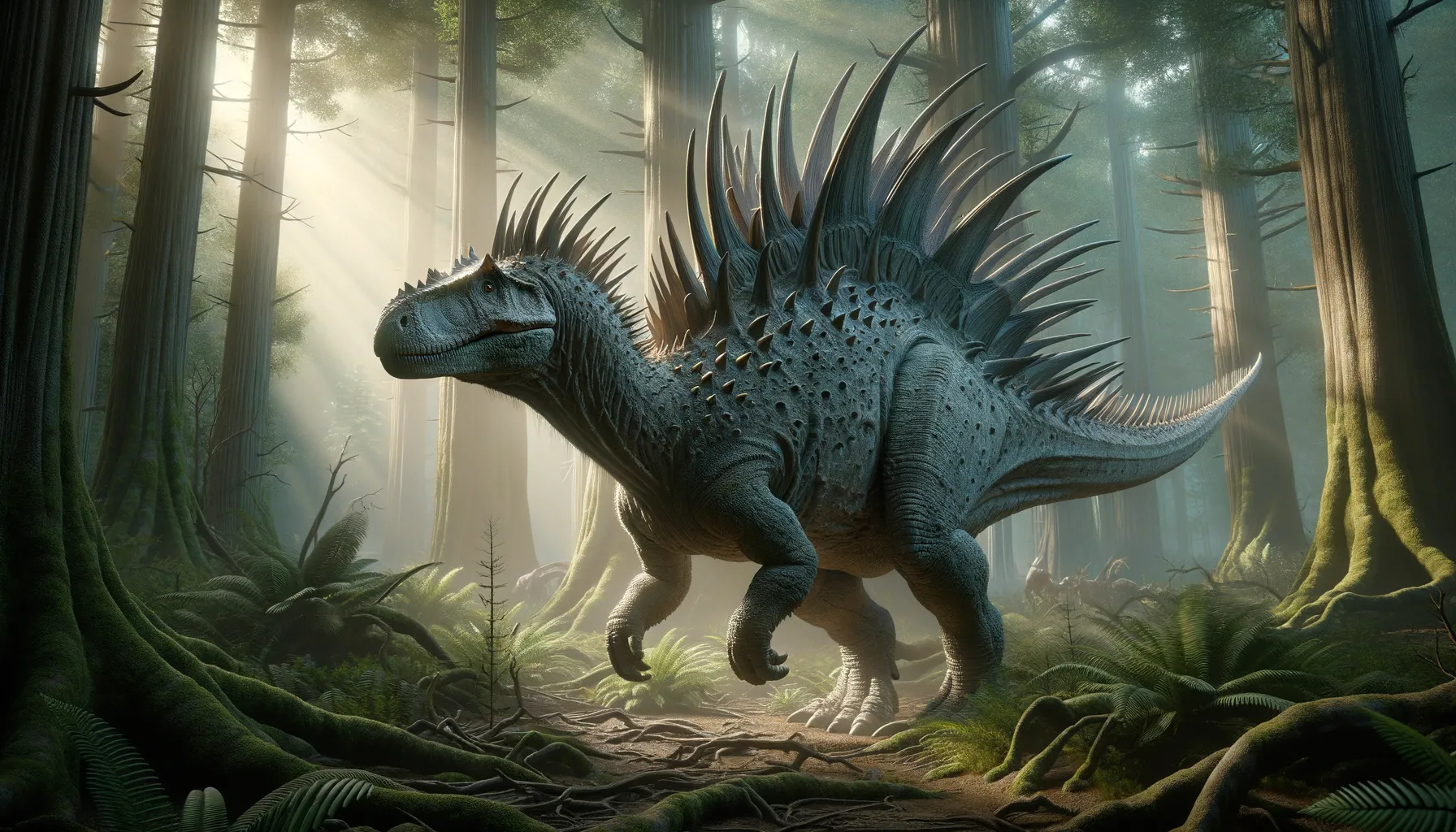
Dacentrurus
The spiky guardian of Jurassic greens!
Period
Jurassic
Length
Approximately 8 meters in length.
Height
About 2 meters tall at the hips.
Weight
Estimated to weigh around 2 tons.
Dacentrurus was a peaceful, plant-eating dinosaur known for its impressive array of spikes and plates on its back. With a lightweight frame relative to its spiky defenses, it roamed the late Jurassic forests and other environments. It used its plates for body thermoregulation and defense against predators, living alongside both carnivorous and herbivorous dinosaurs.
Diet
Dacentrurus was a herbivore, feasting on a variety of plants, including ferns and cycads. It had a beak-like mouth to clip vegetation and likely relied on fermentation within its large gut to digest plant material.
Hunting
As a herbivore, Dacentrurus did not hunt other animals. Instead, it likely spent its days browsing for vegetation, using its keen sense of smell to locate food sources.
Environmental challenges
Dacentrurus lived in an era where the climate was relatively warm, but it had to contend with seasonal changes that affected plant availability. Predation posed a constant threat, likely from large carnivorous dinosaurs. Their spikes and plates might have evolved partly as a defense mechanism. Habitat loss due to natural changes in the environment also would have been a concern.
Speed
Dacentrurus was a slow-moving dinosaur.
Lifespan
It likely lived for 20-30 years in the wild.
First discovery
Discovered in England in 1875 by Richard Owen.
Fun Facts
- Dacentrurus was one of the earliest known stegosaurids and lived about 150 million years ago during the late Jurassic period.
- This dinosaur's name means 'tail full of points' because it had a spiky tail, which it likely used for defense.
- Dacentrurus was equipped with large plates and spikes along its back, similar to its more famous relative, Stegosaurus.
- The dinosaur was herbivorous, meaning it fed on plants, likely munching on ferns, cycads, and other prehistoric flora.
- Fossils of Dacentrurus have been found primarily in Western Europe, with discoveries in countries like Portugal, France, and Spain.
- Despite its combative appearance, Dacentrurus was relatively small for a stegosaurid, measuring about 6 to 8 meters long.
- Dacentrurus is a relatively less-known dinosaur, offering exciting opportunities for paleontologists to uncover more about stegosaur evolution.
Growth and Development
Young Dacentrurus would have been vulnerable to predators, relying on adults for protection. They likely grew rapidly in their early years to reach a size that could deter most threats. Juvenile dinosaurs may have formed social groups to provide additional safety, maturing into more solitary or smaller group arrangements as adults.
Habitat
Dacentrurus preferred forested regions with plenty of plant life. These environments provided both food and cover from predators. They probably inhabited areas near bodies of water, like rivers or lakes, which supported lush vegetation. Open fields were used for movement but posed higher risks from predators.
Interaction with other species
Dacentrurus shared its habitat with a variety of other dinosaurs and smaller animals. It may have lived in mutualistic relationships with smaller herbivores, which could alert it to danger. They were less likely to interact peacefully with carnivores, which they needed to defend against. Competition with other large herbivores for resources could have been common.
Natural lifespan
In optimal conditions, they could live around 20-30 years.
Reproduction
Dacentrurus was an egg-laying dinosaur, likely caring for its young similar to modern reptiles. Breeding likely occurred in specific seasons, influenced by environmental conditions. Parental care may have varied, with some individuals showing protective behaviors towards nests.
Social behaviour
While definitive evidence of social behavior is sparse, it is possible that Dacentrurus lived in small groups for protection, especially during juvenile stages. Their social structure likely involved basic communication methods, using body displays or sounds. During mating seasons, territorial disputes may have occurred between competing males.
Fossil locations
Fossils of Dacentrurus have been primarily found in Western Europe, with notable discoveries in the UK, France, and Spain. These areas indicate a wide range of habitats across Europe during the Late Jurassic period. Their presence in multiple locations suggests a successful adaptation to diverse environments.
